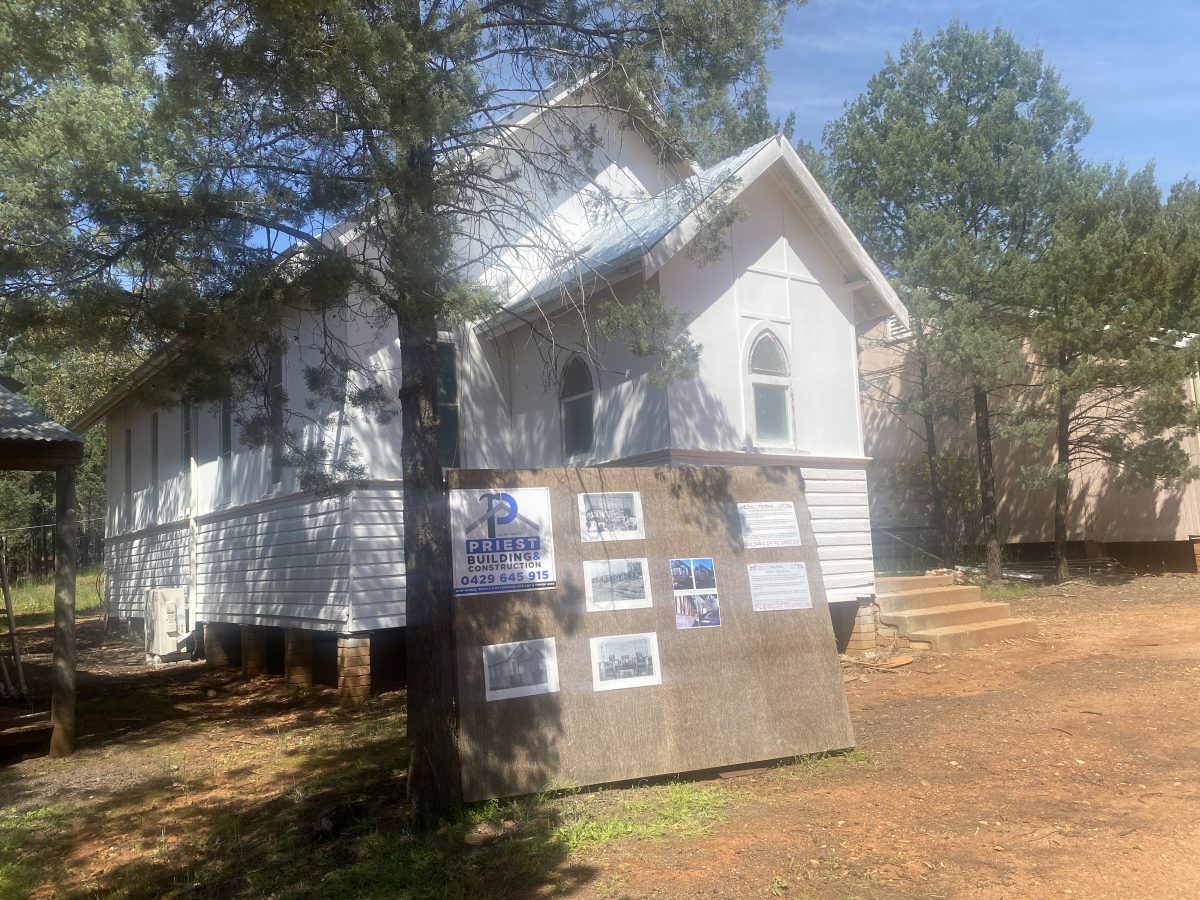
Jennifer O’Donnell-Priest is delighted the iconic building will be preserved and repurposed. Photos: Oliver Jacques.
A historically significant Griffith church building once poised for demolition will now be brought back to life for community use.
The iconic original Baptist church building, constructed in Griffith in 1925, is set to be refurbished at Pioneer Park Museum, to be used as a community asset for weddings, functions, meetings and workshops.
The white fibro building, first located on the corner of Wakaden and Whitton streets, was transported to the museum in 1972, just before a larger, new church was constructed on the same site the following year. The original church steadily deteriorated and was scheduled for demolition in the early 2000s, but a recent injection of funding means work is now underway to preserve and enhance the heritage edifice.
Museum business and administration coordinator Jennifer O’Donnell-Priest says recently deceased Wiradjuri artist Veronica Collins was another strong motivator in her decision to resurrect the church building.
“We were struggling with the decision to demolish it and then Veronica Collins came along with her dad, ‘Clarkie’ Collins,” Ms O’Donnell-Priest said.
”Clarkie reckons he and his late wife, Mary Kathleen (nee Bamblett), were the last Kooris to be married here …. when I told Veronica it’s supposed to be demolished she said, ‘Nah’. She went around to businesses and raised about $5000 herself. I thought, OK, we got this and then with a successful part-funding application and support from council we are restoring it. Veronica will always be a connection to the church in my heart.
“We were successful with Community Building Partnership funding, the [Baptist] church community contributed, Griffith Pioneer Park Museum Committee and then Griffith City Council have put in the largest component. We’re nearly there, we just have to finish painting and do the interior.
”We’re not going to be putting pews back in it. It’ll be an empty space that will lend itself to what the user requires. Art, music, photography workshops, weddings or church services. This will also meet the demand at the museum for more indoor community space.”

The original Baptist church at Pioneer Park.
Baptists, who adhere to a branch of Protestant Christianity, first started meeting in Griffith in 1919 at the local Lyceum Theatre, until they raised 600 pounds from their missionaries to construct the church on Wakaden Street in 1925. Young pastors lived in small rooms, known as vestries, at the back of the building. The new church opened on the same site in 1973 and remains there today.
The Baptist church is one of 40 historic buildings that can be viewed at Pioneer Park Museum, an 11-hectare Griffith City Council-run open-air facility dedicated to preserving the history of the town and surrounding areas. While some structures are recreations, many original buildings have been carefully transported to the museum site and preserved thanks to an army of volunteers and continued support from Griffith City Council.
“The church arrived at the museum in 1972 on the back of Vern Evans’ truck,” Ms O’Donnell-Priest said.
”They had to cut the roof off to transport it under the power lines and reinstate it with a bit of bush carpentry. That’s how we got most of our buildings here intact, though back in the day they even used horses.”

Inside Griffith’s first hospital.
The first Griffith District Hospital, funded by the community and opened in 1922 in response to the Spanish Flu epidemic in 1919, was transported to the museum in 1977. Visitors can see one of only two timber-built iron lungs (machines used to help polio victims breathe) still left in Australia. The hospital had a capacity for 12 beds inside, plus six on the verandah, and a rudimentary operating theatre.
Pioneer Park Museum, in Remembrance Drive, is open 10 am to 4 pm weekdays and 10 am to 3 pm on weekends. Entry cost for adults is $12, concession $10, children $8 and a family of two adults and three children is $30. As a special offer, Griffith locals can currently enter free if accompanied by an out-of-town visitor.
Original Article published by Oliver Jacques on Region Riverina.







